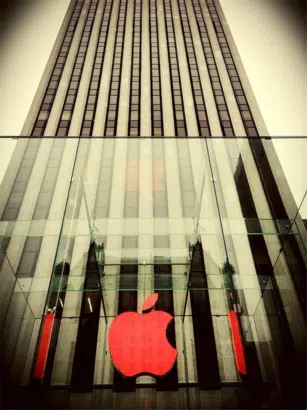Steve Jobs: A Lesson in How Focus Foils Failure
Steve Jobs was a visionary. (Perhaps not in a fashion sense, but in other, more important ways, which is how he got away with wearing turtleneck sweaters.)
Everyone who can spell ‘í’ knows his legacy: He took Apple, a company whose profits had dropped significantly in the late 1990’s, and turned them into one of the most influential brands. EVER. We can thank him for the iPod, iPad and iPhone, devices that literally changed the world.
But have you ever heard of the Newton Digital Assistant? Or how about the Pippin?
These were products that Apple produced in the late 1990’s that were pushing the brand towards bankruptcy. On his return to Apple in the late 90’s, Steve Jobs made the tough, but important business decision to kill the product lines that were killing Apple.
Channeling our inner Steve Jobs in our role as business coaches for small-medium business owners, we often take a leaf from his book and advise our clients that more is not always better. This is particularly important for a business’ Product Lines. Applying a focused approach to product lines increases the business’ ability to target lucrative markets, be more efficient and, in turn, be more profitable – and that’s what we are here for. Sometimes shutting down a pet product is the only way forward.
We often see it when a new client starts business coaching: they have so many products or services, and they are also thinking about adding another (another!) product because ‘someone might want it’ or it will justify buying a piece of cool, new equipment. In fact, it’s so common the coaches at Tenfold Business Coaching have a name for it: ‘Shiny Syndrome’.
‘Shiny Syndrome’: a disorder where business owners get distracted chasing bright and shiny ‘opportunities’ that, when held up against a sound financial model, don’t actually present any real business value.
Even the visionary Steve Jobs suffered from the ‘Shiny Syndrome’; his Apple ‘The Cube’ was a product that some kindly say was a precursor to Apple TV. The reality, however, was that the product failed – spectacularly! – and Jobs had to make the hard call.
The bright and shiny opportunity that Apple had so much hope for ceased production less than a year after its release.
The key insight that we share with our business coaching clients is that bloated product lines can distract a business from achieving short term outcomes, such as positive cash flow, profitability, as well as long term outcomes of increased business value and equity.
In some instances, it’s easy to see when your product lines are failing, but in other situations it’s less obvious. If in doubt, here are some tips to help check the value of your product lines:
1. Find someone to be a sounding board and pitch your product lines to them as if you were asking them to invest in that product alone. How much of their hard-earned coin they are willing to invest in that product? Anything less than $1000 is lip-service, over $1000 and your product got a real tick. Run this process with a few different people to test the results.
2. Test each product line against your financial model. If you don’t have one, you need one. There are lots of free online tools for micro businesses – start Googling (If your business turnover if greater than $500K, organise to speak with a Tenfold Business Coach today.)
3. Do some market research: we advise our business coaching clients to, visit online forums where your target market hangs out, or tap into the universal knowledge base that is Google: use Google trends and Google Keywords Planner tool to see how many people are searching for the product/service you’re selling. Google often also suggests search terms for comparative (or substitute) products or services.
Armed with that information, you’re ready to channel the inner Steve Jobs in you; go forth and focus!
PS – If you’re focused on focusing, read our previous post: 5 Reasons Your Business Should Knock Back Work To Be More Profitable
Image Credit: A red Apple in the Big Apple? cc by Global X (contact)





